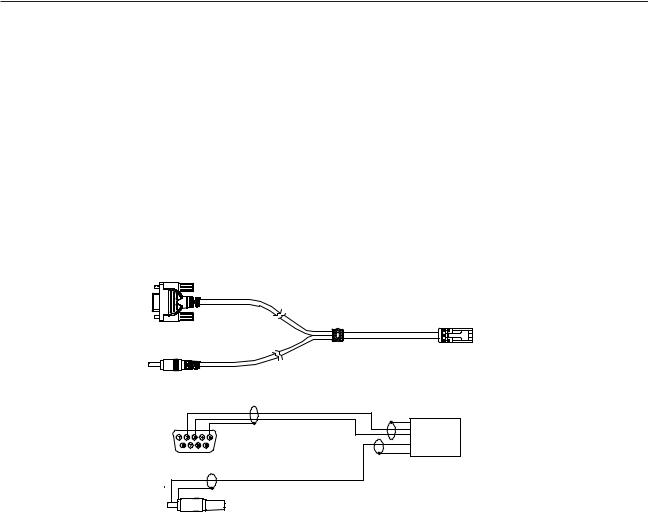BOSE PS18, PS28, PS48 Schematic

PS28/48 General Test Procedures
1. Initial Product Test
Note: Before taking the unit apart or performing any repair process, an attempt to verify the customer complaint must be made.
1.1Read any customer note included with the unit.
2.Attempt to verify the complaint before opening the unit or performing any repairs.
2.1Customer complaint not verified, discuss with customer.
2.2Customer complaint verified, troubleshoot and repair the unit. Refer to the PS28/28 Troubleshooting Tips/Preventative Repair Measures document.
3.Check the software revision of the unit, using the procedures on page 5, procedure 2.3.
Refer to the Bose® service extranet site, http://serviceops.bose.com for information regarding the latest software revision. Update is needed.
4. Verify Performance and all functions.
Note: If a media center is available, use the procedures “With AV28 media center”. if a media center is not available, use the procedures “Without AV28 media center”.
Required Test Equipment and Cables
1.Audio Signal Generator.
2.Digital Converter (A-D) with S/PDIF output, if AV28 Media Center is not availble.
3.PC (IBM compatible), if AV28 Media Center is not availble.
4.DC power supply for cube phase test.
5.Audio amplifier for cube sweep test.
6.PS28/48 test cable part number 264564.
7.RCA to bare wire cables (to connect cube speakers to bass module).
Black rear cable part number 180644
Black Left/Center/Right part number 180643-4
Note: AC2 connector part number 195505-001 is needed to connect bare wire to Jewel® Cube speaker.
|
9 PIN D-SUB FEMALE |
|
|
Connect to computer |
|
|
|
RS232 port |
|
8 PIN RJ45 |
Connect to |
|
|
|
|
Connect to D-A |
RCA PLUG |
|
PS28/48 bass module |
|
|
||
|
|
|
|
converter |
|
|
|
|
2 |
|
|
|
3 |
|
|
|
6 |
RJ45 |
|
|
|
|
|
|
7 |
|
|
|
8 |
8 PIN |
|
Test cable part number 264564
1

PS28/48 Performance Verification Procedures
(Without AV28 Media Center Console)
Test setup procedures
Place the bass module into TAP mode using the procedures located at the end of this document.
Note: Place all four DIP switches into the down position before returning the unit to the customer.
Test cable part number 264564, Figure 16, is needed to test the bass module.
Connect the D-sub, 9 pin connector on the test cable to the COM port on your computer. Connect the RJ-45, 8 pin connector to the bass module.
The bass module requires a digital audio input. Connect the analog output of an oscillator to the analog input of an Analog to Digital (A-D) converter. Connect the test cable’s RCA connector to the A-D converter S/PDIF output.
1.Sweep Test
1.1Issue the following TAP commands:
SO ALL D (select all digital source inputs) SP 5 (5 speaker mode)
VO CB 0 (set volume to full output, 0dB) MU AMP OFF (unmute the amp)
1.2Apply a 200 mVrms, 25 Hz signal to the left and right input of the analog to digital (A-D) converter. Listen for any extraneous noises such as rubbing, scraping, or ticking.
Note: No extraneous noises such as rubbing, scraping or ticking should be heard. To distinguish between normal suspension noise, rubs and ticks, displace the woofer cone with your finger. If the sound can be made to go away or get worse, it’s a rub or tick and the woofer should be replaced. If the noise stays the same, it’s normal suspension noise and it will not be heard with regular program material.
1.3Sweep the bass module from 40 Hz to 300 Hz. Listen carefully for any buzzes, rattles
or extraneous noises coming from the bass module.
Note: Redress any wire or component that buzzes.
2 Bass Module Air Leak Test
2.1Apply a 200 mVrms, 40 Hz signal to the input of the A-D converter.
2.2Check for air leaks from the cabinet. Listen near the areas where the plastic seals to the wood.
3.Cube Speaker Phase Test
Note: The DC voltage should only be momentarily applied to the cube speaker input to avoid damaging the speakers.
3. 1 Observing polarity, momentarily apply 8 Vdc to the input of the cube speaker.
3.2The speakers should move outward with the application of the dc voltage. Check the cube wiring if it moves inward.
4.Cube Speaker Sweep Test
4.1Apply an 11 Vrms, 20 Hz signal to the input of the satellite. Change the applied signal to 8 Vrms, 150 Hz. Sweep the oscillator from 150 Hz to 2 kHz.
4.2Listen for rubs, ticks, air leaks, buzzes or other extraneous noises.
Note: Defects such as rubs, ticks and air leaks will typically be most audible during the 20 Hz test. Defects such as buzzes will typically be heard during the 150 Hz to 2 kHz sweep. Note: The satellite cubes are not repairable. The Jewel Cube® speakers are repairable.
5.Listening Test
5.1Connect the cube speakers to the outputs of the bass module.
5.2Connect an audio source (i.e. CD player) to the input of the A-D converter.
5.3Perform procedure 1.1
5.4Adjust the volume output of the audio source to a comfortable level and listen for a clean undistored audio output from the bass module and cube speakers.
2
